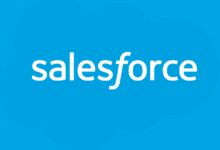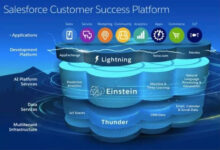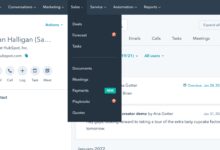CRM System Pricing: 7 Shocking Truths You Must Know in 2024
Navigating CRM system pricing can feel like decoding a secret code. With plans ranging from free to thousands per month, understanding what you’re really paying for is crucial to making a smart investment.
Understanding CRM System Pricing: What You’re Really Paying For

Customer Relationship Management (CRM) systems have evolved from simple contact databases into powerful platforms that drive sales, marketing, and customer service. But with this evolution comes complexity—especially when it comes to pricing. CRM system pricing isn’t just about how many users you have; it’s about features, scalability, integration capabilities, and long-term value.
Core Components of CRM Pricing Models
Most CRM vendors use a tiered pricing structure based on functionality and user count. The core components typically include:
- User-based pricing: Charged per user per month, common in platforms like Salesforce and HubSpot.
- Feature-based tiers: Entry-level plans offer basic contact and lead management, while premium tiers include automation, analytics, and AI tools.
- Usage-based add-ons: Extra costs for email sends, API calls, or storage beyond limits.
For example, Salesforce starts at $25/user/month but can exceed $300/user/month for enterprise-grade features. This tiered approach allows businesses to scale but can lead to unexpected costs as needs grow.
Hidden Costs in CRM System Pricing
Many companies underestimate the total cost of ownership (TCO) because they overlook hidden fees. These include:
- Implementation and onboarding services
- Data migration from legacy systems
- Customization and third-party integrations
- Training and ongoing support
“The sticker price is just the beginning. Real CRM system pricing includes time, training, and tech debt.” — Gartner Research, 2023
A study by Nucleus Research found that implementation costs can equal or even exceed the annual software subscription, especially for mid-sized and large organizations. Always request a full cost breakdown before signing any contract.
Top CRM Platforms and Their Pricing Breakdown
To make informed decisions, let’s compare the leading CRM platforms and their pricing structures. This analysis focuses on transparency, scalability, and value for money in today’s market.
Salesforce: The Enterprise Powerhouse
Salesforce dominates the CRM space with a market share of over 19% (Statista, 2024). Its CRM system pricing reflects its position as a leader in enterprise solutions.
- Sales Cloud Essentials: $25/user/month – basic lead and opportunity tracking
- Professional: $75/user/month – workflow automation, email integration
- Enterprise: $150/user/month – advanced customization, API access
- Unlimited: $300/user/month – 24/7 support, sandbox environments
While powerful, Salesforce often requires additional investments in Trailhead training and third-party consultants for setup. For small businesses, this can make CRM system pricing prohibitively high.
HubSpot: The All-in-One Challenger
HubSpot has gained popularity for its user-friendly interface and transparent CRM system pricing. The platform offers a forever-free CRM tier, making it accessible for startups and SMBs.
- Free CRM: $0 – contact management, email tracking, basic reporting
- Starter: $18/month (billed annually) – marketing, sales, and service hubs
- Professional: $450/month per hub – automation, A/B testing, custom reporting
- Enterprise: $1,200/month per hub – advanced AI, predictive lead scoring
One major caveat: pricing is per hub (marketing, sales, service), so using multiple hubs multiplies the cost. However, HubSpot’s free tier remains one of the most generous in the industry, offering robust functionality without a credit card.
Microsoft Dynamics 365: The Integrated Suite
Dynamics 365 is ideal for organizations already using Microsoft 365. Its CRM system pricing is competitive, especially for enterprises seeking deep integration with Office, Teams, and Power BI.
- Sales Professional: $65/user/month – lead management, Outlook integration
- Customer Service: $95/user/month – case management, knowledge base
- Enterprise Plan: $225/user/month – AI insights, omnichannel engagement
Microsoft offers flexible deployment options and strong security compliance, making it a top choice for regulated industries. Integration with Azure and Power Automate adds value but may require technical expertise, increasing implementation costs.
Free vs. Paid CRM: Is Free Really Free?
The allure of a free CRM is strong, especially for bootstrapped startups. But CRM system pricing isn’t just about the monthly bill—it’s about opportunity cost, scalability, and long-term growth.
Benefits of Free CRM Systems
Free CRMs like HubSpot, Zoho CRM, and Bitrix24 offer real value:
- No upfront investment required
- Quick setup and onboarding
- Basic automation and contact management
- Ideal for testing CRM workflows before committing
According to a 2023 survey by Capterra, 68% of small businesses started with a free CRM and upgraded within 18 months. This trial period helps teams understand their needs before investing.
Limitations and Risks of Free CRMs
Free doesn’t mean unlimited. Most free CRMs impose restrictions that can hinder growth:
- User limits (e.g., Zoho CRM free plan allows 3 users)
- Reduced storage (10MB–100MB)
- No API access or third-party integrations
- Limited reporting and analytics
- Branding (e.g., “Powered by Zoho” in emails)
Moreover, migrating data from a free CRM to a paid platform later can be time-consuming and costly. As your business grows, the lack of automation and scalability in free tools becomes a bottleneck.
“Free CRMs are like training wheels—they help you start, but you’ll outgrow them fast.” — TechRadar, 2024
Factors That Influence CRM System Pricing
Understanding what drives CRM system pricing helps you negotiate better deals and avoid overspending. Several key factors determine how much you’ll pay.
Number of Users and Seat Licensing
Most CRM vendors charge per user, also known as seat licensing. This model scales linearly—double the users, double the cost. However, some platforms offer volume discounts for 10+ or 50+ users.
For example, Zoho CRM offers a flat rate for up to 10 users on its Standard plan, making it cost-effective for small teams. Larger organizations should negotiate enterprise agreements to reduce per-user costs.
Feature Tiers and Module Add-Ons
Vendors segment features across tiers to encourage upgrades. Basic plans include contact and deal tracking, while higher tiers unlock:
- Marketing automation (email campaigns, lead nurturing)
- Sales forecasting and pipeline analytics
- Customer service portals and ticketing
- AI-powered insights and chatbots
Some CRMs, like Pipedrive, offer modular pricing—pay only for the features you need. This flexibility can reduce CRM system pricing for specialized teams.
Integration and API Costs
CRMs don’t work in isolation. Integration with email, calendars, e-commerce platforms, and ERP systems is essential. While basic integrations (e.g., Gmail, Outlook) are usually free, advanced API usage may incur extra charges.
For instance, Salesforce charges for API call limits beyond a certain threshold, which can impact businesses with high data synchronization needs. Always assess your integration roadmap before selecting a CRM.
Customization and Implementation: The Hidden Price Tags
Even the most affordable CRM can become expensive if customization and implementation aren’t factored into CRM system pricing.
Implementation Costs and Time Investment
Implementation includes data migration, workflow design, user training, and system configuration. For complex CRMs like Salesforce, this can take weeks or months.
- Small business: $2,000–$10,000
- Mid-market: $15,000–$50,000
- Enterprise: $100,000+
Some vendors offer free setup for basic plans, but enterprise deployments often require certified consultants. Platforms like HubSpot provide self-serve tools to reduce these costs.
Customization: When Flexibility Meets Expense
Every business has unique processes. Custom fields, workflows, dashboards, and reports add value but increase complexity.
Low-code platforms like Zoho Creator or Microsoft Power Apps allow in-house customization, reducing reliance on external developers. However, over-customization can lead to:
- Higher maintenance costs
- Slower performance
- Difficulty upgrading to new versions
Best practice: Start with out-of-the-box functionality and customize only what’s essential.
Cloud vs. On-Premise CRM: Cost Comparison
The deployment model significantly impacts CRM system pricing. While cloud-based CRMs dominate the market, on-premise solutions still exist for specific use cases.
Cloud CRM: Pay-as-You-Go Flexibility
Cloud CRMs (SaaS) are subscription-based, typically billed monthly or annually. Benefits include:
- Lower upfront costs
- Automatic updates and security patches
- Scalability and remote access
- Disaster recovery and backups included
However, long-term costs can accumulate. A $50/user/month CRM used by 50 people over five years totals $150,000—plus renewal fees and potential price hikes.
On-Premise CRM: High Upfront, Long-Term Control
On-premise CRMs require purchasing licenses and maintaining servers. Initial costs are high:
- Software licenses: $5,000–$50,000+
- Server hardware and IT infrastructure
- Annual maintenance (15–20% of license cost)
- In-house IT staff for management
Despite the cost, some industries (e.g., government, finance) prefer on-premise for data sovereignty and compliance. However, the trend is clearly shifting toward cloud solutions for agility and cost efficiency.
How to Choose the Right CRM Based on Pricing and Value
Selecting a CRM isn’t just about finding the cheapest option—it’s about maximizing return on investment (ROI). CRM system pricing should be evaluated against business outcomes.
Align CRM Features with Business Goals
Ask: What problem are you solving?
- Sales team needs pipeline visibility? Look for forecasting and deal tracking.
- Marketing wants lead nurturing? Prioritize automation and email tools.
- Customer service requires ticketing? Focus on service modules and SLA tracking.
A mismatch between features and needs leads to underutilization—a common reason for CRM failure. According to Salesforce, 43% of CRM projects fail due to poor user adoption, often because the system doesn’t fit workflows.
Calculate Total Cost of Ownership (TCO)
TCO includes:
- Subscription fees
- Implementation and training
- Integration and customization
- Support and renewal costs
- Opportunity cost of downtime or poor performance
Use a TCO calculator to compare options over a 3–5 year horizon. A slightly more expensive CRM with better support and scalability may offer lower TCO in the long run.
Negotiate and Leverage Vendor Competition
CRM vendors expect negotiation. Tactics include:
- Requesting annual billing discounts (10–20% off monthly)
- Asking for free training or onboarding credits
- Bundling multiple products (e.g., CRM + marketing automation)
- Using competitor quotes as leverage
For example, if you have a quote from HubSpot, share it with Zoho or Salesforce—they may match or beat it to win your business.
What is the average cost of a CRM system?
The average cost of a CRM system ranges from $12 to $250 per user per month. Small businesses can start with free or $12–$50 plans, while enterprise solutions like Salesforce or Microsoft Dynamics can exceed $300/user/month. Additional costs for implementation, customization, and integrations can double the total expense.
Are there any truly free CRM systems?
Yes, several CRM systems offer free plans with real functionality. HubSpot CRM, Zoho CRM, and Bitrix24 provide free tiers that include contact management, email tracking, and basic automation. However, these plans usually limit users, storage, or advanced features. They’re ideal for startups but not scalable for growing businesses.
How can I reduce CRM system pricing costs?
You can reduce CRM costs by starting with a free or low-tier plan, negotiating annual contracts, limiting user licenses to active team members, using self-implementation tools, and avoiding unnecessary add-ons. Also, consider open-source CRMs like SuiteCRM for full control without licensing fees.
Which CRM offers the best value for small businesses?
For small businesses, HubSpot CRM and Zoho CRM offer the best value. HubSpot’s free plan is feature-rich, while Zoho CRM’s Standard plan at $14/user/month includes automation and integrations. Both are easy to use and scale affordably, making them top choices for SMBs.
Do CRM prices include support and updates?
In cloud-based CRMs, support and updates are typically included in the subscription fee. However, response times and support channels vary by tier. Free plans may offer only community or email support, while enterprise plans include 24/7 phone support and dedicated account managers. Always check the service-level agreement (SLA).
CRM system pricing is more than a monthly fee—it’s a strategic investment in your business’s growth. From free tools to enterprise suites, the right CRM balances cost, functionality, and scalability. By understanding hidden fees, evaluating total cost of ownership, and aligning features with goals, you can avoid overspending and maximize ROI. Whether you’re a startup or a multinational, the key is to choose a CRM that grows with you, not one that holds you back.
CRM system pricing – CRM system pricing menjadi aspek penting yang dibahas di sini.
Further Reading:



